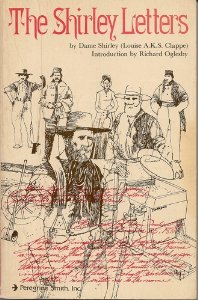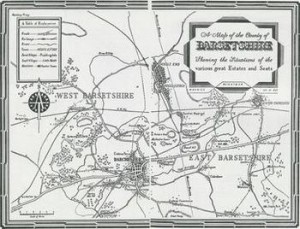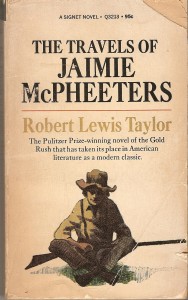(Since The Quivera Trail is launching next weekend – at New Braunfels’ Weihnachtsmarkt, no less – I have begun research for the next historical adventure, that picaresque California Gold Rush adventure which I have always wanted to write. This research takes the form of reading every darned history and contemporary account that I have on my shelves, or can get my hands on. One of these books is The Shirley Letters from the California Mines 1851-1852, by Louise Amelia Knapp Smith ‘Dame Shirley’ Clappe.)
is launching next weekend – at New Braunfels’ Weihnachtsmarkt, no less – I have begun research for the next historical adventure, that picaresque California Gold Rush adventure which I have always wanted to write. This research takes the form of reading every darned history and contemporary account that I have on my shelves, or can get my hands on. One of these books is The Shirley Letters from the California Mines 1851-1852, by Louise Amelia Knapp Smith ‘Dame Shirley’ Clappe.)

Louise Amelia – better known by her pen-name, Dame Shirley – was an irreproachably Victorian lady, possessing a lively intellect and observant eye, which the education typically given to girls at that time did nothing to impair. Conventional expectations for upper-class women of her day seem hardly to have made a dent in her, either. She was born around 1819 in Elizabeth New Jersey and orphaned by the deaths of both parents before out of her teens. She had a talent for writing, encouraged by an unexpected mentor – Alexander H. Everett, then famed in a mild way as a diplomat, writer and public speaker. He was twice her age, and seems to have fallen at least a little but in love with her. She did not see him as a suitor, but they remained friends and devoted correspondents. Eventually she was courted by and consented to marry a young doctor, Fayette Clappe – who even before the ink was dry on the registry, caught the gold fever. Fayette and Louise Amelia were off on the months-long voyage around the Horn to fabled California. The gold rush was almost overwhelmingly a male enterprise – wives and sweethearts usually remained waiting at home, but not the indomitable Louise, who confessed in one of her letters to her sister Molly, “I fancy that nature intended me for an Arab or some other nomadic barbarian, and by mistake my soul got packed up in a Christianized set of bones and muscles.”
They tarried briefly in San Francisco, before the incessant fog and chill drive Fayette Clappe to take up a residence and medical practice inland, first at the mining boom-town of Rich Bar, and then at Indian Bar, on the Feather River. Over 1851 and 1852, she wrote a series of letters to her sister Molly in back in Massachusetts; letters that were sharply observant, rich in detail, lively and fully open to the contrasts and absurdities – as well as the beauty of the landscape around them – and the sheer social chaos of the mining boomtowns. Of Rich Bar itself she observed, “Through the middle of Rich Bar runs the street, thickly planted with about forty tenements, among which figure round tents, square tents, plank hovels, log cabins, etc., the residences varying in elegance and convenience from the palatial splendor of “The Empire” down to a “local habitation” formed of pine boughs and covered with old calico shirts … To-day I visited the “office,” the only one on the river. I had heard so much about it from others, as well as from F., that I really did expect something extra. When I entered this imposing place the shock to my optic nerves was so great that I sank helplessly upon one of the benches, which ran, divan-like, the whole length (ten feet!) of the building, and laughed till I cried. There was, of course, no floor … the shelves, which looked like sticks snatched hastily from the woodpile, and nailed up without the least alteration, contained quite a respectable array of medicines.”
The letters stand almost alone among contemporary gold rush accounts; first for having been written by a woman at a time and place when there were only a handful of them present and of those few hardly any possessed the time and inclination to pick up a pen. Of the other three women in Rich Bar when Louise Amelia arrived, two were married with children and engaged in working in their husband’s enterprises, the third a husky young woman working in her father’s hotel. With undiminished zest, Louise Amelia chronicled the daily doings of Rich Bar, the celebrations and accidents, the sad funeral of one of the other women, the labor of mining gold, the appearance of her own little cabin, and a hundred other topics. It is plain that she had the time of her life during those fifteen months, and missed nothing of conventional life at all.
“How would you like to winter in such an abode? in a place where there are no newspapers, no churches, lectures, concerts, or theaters; no fresh books; no shopping, calling, nor gossiping little tea-drinkings; no parties, no balls, no picnics, no tableaus, no charades, no latest fashions, no daily mail (we have an express once a month), no promenades, no rides or drives; no vegetables but potatoes and onions, no milk, no eggs, no nothing? Now, I expect to be very happy here. This strange, odd life fascinates me … How I shall ever be able to content myself to live in a decent, proper, well-behaved house, where toilet-tables are toilet-tables, and not an ingenious combination of trunk and claret-cases, where lanterns are not broken bottles, bookcases not candle-boxes, and trunks not wash-stands, but every article of furniture, instead of being a makeshift, is its own useful and elegantly finished self, I am sure I do not know.”
Before winter of 1852 set in, Dr. Clappe insisted that they return to San Francisco. The easily-mined placer gold would have been nearly mined out by that point, and Louise Amelia’s adventure was over. “My heart is heavy at the thought of departing forever from this place. I like this wild and barbarous life. I leave it with regret … Yes, Molly, smile if you will at my folly, but I go from the mountains with a deep heart-sorrow. I took kindly to this existence, which to you seems so sordid and mean. Here, at least, I have been contented … You would hardly recognize the feeble and half-dying invalid, who drooped languidly out of sight as night shut down between your straining gaze and the good ship Manila as she wafted her far away from her Atlantic home, in the person of your now perfectly healthy sister.”Very shortly thereafter Dr. Clappe took a trip to the Hawaiian Islands; likely their marriage was already dissolving. Eventually they divorced; Louise Amelia remained in San Francisco, teaching school and keeping a kind of intellectual salon. The letters were reprinted serially in a short-lived local literary magazine, The Pioneer, over 1854 and 1855 – but they were read and appreciated by historians like Josiah Royce and Hubert Bancroft, and writers like Bret Harte and Samuel Clemens. When ill-health forced Louise Amelia to retire from teaching, she returned to the east to live with family. She died in 1907. Eventually the letters were collected and published in in 1922 and again in 1949 – as lively and fresh a voice as they were when first written.




Recent Comments